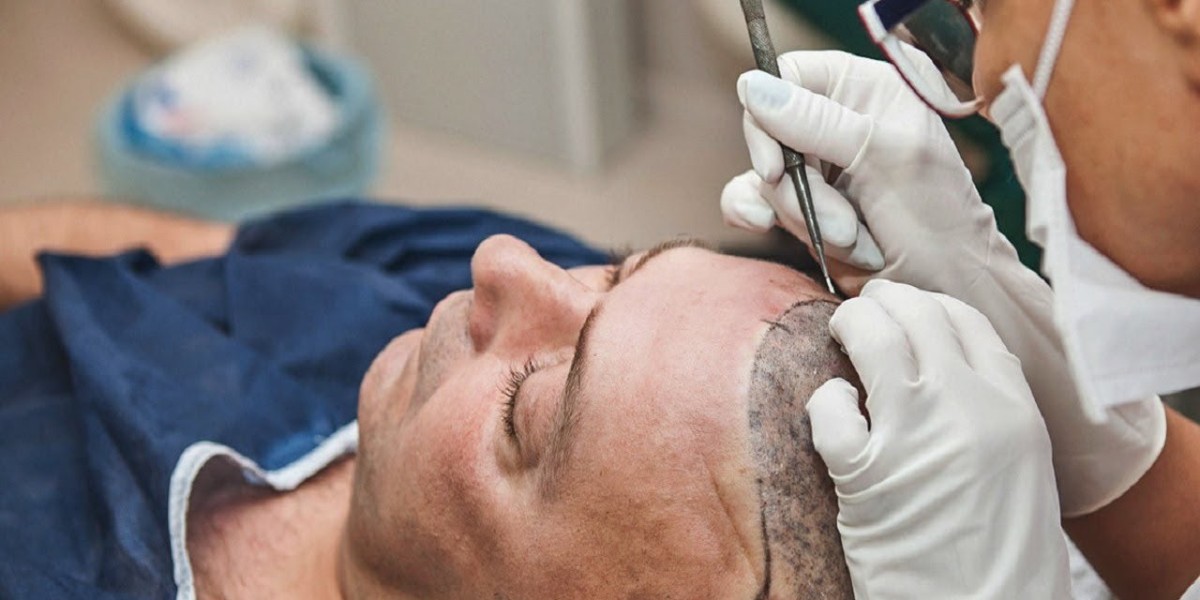A natural-looking hairline is one of the most important aspects of any Hair Transplant in Islamabad. It’s not just about restoring lost hair—it’s about framing your face, balancing your features, and creating a youthful, confident appearance. The hairline is the foundation of every successful transplant, and designing it correctly is a fine blend of science, artistry, and precision.
If the hairline is placed too high, it may look unnatural or fail to restore a youthful look. On the other hand, if it’s too low or straight, it can appear artificial and draw unwanted attention. Therefore, understanding how to choose the right hairline design for your face shape, age, and preferences is essential before undergoing the procedure.
In this blog, we’ll explore the principles of ideal hairline design, the factors that influence it, and tips to ensure your final result looks completely natural and tailored to you.
Understanding Hairline Design
Hairline design refers to the process of planning where the new hairline will start and how it will be shaped. A skilled surgeon takes into account multiple aspects such as facial symmetry, forehead height, donor hair availability, and long-term hair loss patterns.
The ultimate goal is to create a hairline that:
Looks natural and age-appropriate.
Complements your facial proportions.
Provides balanced coverage without exhausting the donor supply.
A well-designed hairline should blend seamlessly with your existing hair and age gracefully over time.
The Art and Science of Hairline Design
Hairline design is both an artistic and scientific process. Every person has a unique facial structure and hair growth pattern, which means no two hairlines should be exactly alike. The surgeon must use their experience and aesthetic judgment to create a design that enhances the individual’s natural features.
1. Facial Proportions and Balance
The position of your hairline should correspond to your facial proportions. Traditionally, the “rule of thirds” is used — the face is divided vertically into three equal parts: from the chin to the nose, from the nose to the eyebrows, and from the eyebrows to the hairline. This balance helps maintain harmony between facial features.
2. Age-Appropriate Placement
A common mistake in hair transplants is designing a hairline that’s too low or too juvenile. While a lower hairline may seem appealing initially, it can look unnatural as you age. A good surgeon will create an age-appropriate hairline that complements your current and future appearance.
3. Hair Direction and Angle
For the most natural result, transplanted hair must follow the same angle and direction as your existing hair. The front hairline usually grows in a slightly forward direction, while the temple and side areas grow backward and downward. Correct angling ensures smooth blending.
4. Density Planning
The density of hair grafts near the front hairline should be slightly lower than behind it to mimic the natural transition from the forehead to denser hair. Gradual density increases provide a soft, realistic appearance.
Factors That Influence Hairline Design
Creating the ideal hairline isn’t a one-size-fits-all approach. Several factors determine how your surgeon will design it:
1. Gender
Men and women have distinct hairline shapes.
Male hairlines are typically “M-shaped,” with a slight recession at the temples.
Female hairlines are generally lower and more rounded, with less temple recession.
A surgeon must take gender-specific aesthetics into account to ensure the result appears natural.
2. Face Shape
Your face shape plays a major role in determining the most flattering hairline:
Oval faces: Almost any hairline works well due to balanced proportions.
Round faces: A slightly higher, V-shaped hairline elongates the face.
Square faces: A softer, curved hairline balances strong jawlines.
Long faces: A lower or flatter hairline can reduce forehead height and balance facial proportions.
3. Degree of Hair Loss
If your hair loss is extensive or progressive, your surgeon will design a conservative hairline that can be maintained as you continue to age. Overly aggressive placement may exhaust the donor area too quickly.
4. Donor Hair Availability
The number of available grafts from the donor region limits how much coverage and density can be achieved. Your surgeon must balance your expectations with the practical limitations of donor hair.
5. Personal Preferences
Your input is essential. During the consultation, you’ll discuss your desired hairline style—whether you prefer a youthful look, a mature one, or something in between. The best results come from collaboration between you and your surgeon.
Common Hairline Designs
There are several hairline patterns that surgeons use as templates, customizing each one based on individual characteristics.
1. Straight Hairline
More common in women, this design creates a smooth, youthful frame for the face. However, it can look unnatural in men if not softened with irregularities.
2. Rounded Hairline
A rounded hairline softens facial features and provides a natural contour. It’s suitable for both men and women, particularly those with square or angular faces.
3. M-Shaped or Receding Hairline
This is the most common male hairline, characterized by gentle recession at the temples. It gives a masculine and mature appearance while maintaining balance.
4. Irregular or Zigzag Hairline
To mimic natural growth, surgeons often create slight irregularities or “micro-zigzags” in the hairline rather than a perfectly straight edge. This technique prevents an artificial, “drawn-on” look.
The Role of Technology in Hairline Design
Modern hair restoration techniques have made hairline design more precise and customizable. Digital imaging and 3D simulations allow patients to visualize potential results before surgery. Surgeons can make real-time adjustments to hairline shape and position, ensuring patients are satisfied with the design before the procedure begins.
Techniques such as Follicular Unit Extraction (FUE) also allow for precise placement of individual grafts, enabling surgeons to control density and angulation for the most natural-looking hairline possible.
Mistakes to Avoid in Hairline Design
While the technology and techniques have improved, mistakes can still happen if planning isn’t done carefully. Common errors include:
Placing the hairline too low, leading to unnatural results as you age.
Creating a straight, artificial line without natural irregularities.
Overloading grafts in the front area and depleting the donor supply.
Ignoring future hair loss patterns, which can result in patchy or uneven coverage over time.
To avoid these issues, it’s crucial to choose an experienced hair transplant surgeon who specializes in natural hairline restoration.
Tips for Choosing the Perfect Hairline for You
Consult a qualified surgeon with experience in aesthetic hairline design.
Review before-and-after photos of previous patients to assess naturalness and density.
Communicate your expectations clearly and discuss long-term goals.
Be realistic about your facial structure, age, and future hair loss.
Trust professional advice — an experienced surgeon knows what will look best on you.
Conclusion
The perfect hairline can transform not only your look but also your confidence. It requires careful planning, expert technique, and a deep understanding of facial aesthetics. When designed properly, your new hairline should look effortless, natural, and completely your own.
If you are considering a Hair Transplant in Islamabad, consulting with the specialists at the Dynamic Aesthetic Clinic is the best place to start. Their team of skilled surgeons combines artistic vision with advanced hair restoration technology to create personalized, natural-looking results. With their expertise, you can achieve a balanced, youthful appearance and a hairline that enhances your individuality for years to come.



